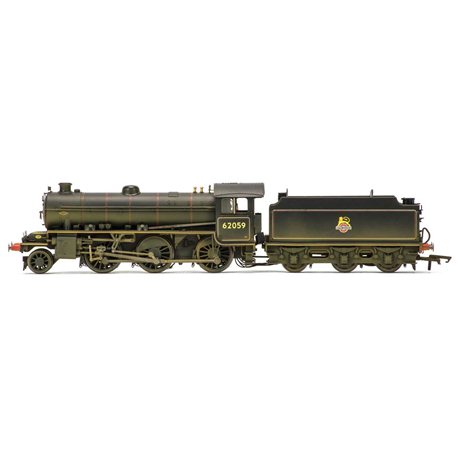No products
Product successfully added to your shopping cart
There are 0 items in your cart. There is 1 item in your cart.
Easter shipping
Please note that couriers are not collecting on Friday 18th and Monday 21st April.
Orders will be dispatched on Tuesday 22nd April
BR 2-6-0 K1 Class - Early BR, Weathered
R3305
Hornby
BR 2-6-0 K1 Class - Early BR, Weathered
- Length 243mm
- DCC Type DCC Ready
- Livery BR
- Class K1
- Designer Arthur H. Peppercorn
- Entered Service 1949
- Detail Diecast Body
- Motor 3 Pole with Flywheel
- Purpose Mixed Traffic
- Special Features
- Cab detail
- NEM Couplings
- Sprung Buffers
This product is out of stock
| Scale | OO (1/76) |
More info
BR 2-6-0 K1 Class - Early BR, Weathered
- Length 243mm
- DCC Type DCC Ready
- Livery BR
- Class K1
- Designer Arthur H. Peppercorn
- Entered Service 1949
- Detail Diecast Body
- Motor 3 Pole with Flywheel
- Purpose Mixed Traffic
- Special Features
- Cab detail
- NEM Couplings
- Sprung Buffers
Inspired by Thompson’s rebuilt Gresley K4 in which it was reclassified as a K1/1, the only locomotive in that particular Class, A. H. Peppercorn took advantage of Thompson’s retirement in 1946 to develop the design into the K1 Class. The K1 Class, which was made up of 70 locomotives, were all built in Glasgow at the North British Locomotive Company’s Park Works over a 10 month period between May 1949 and March 1950. As was the North British Locomotive Company’s all of the Class were sent to Eastfield shed, Glasgow for running in before being sent to England where they were used for both freight and express passenger workings.
Thirty of the Class were sent to the Eastern Region while the remaining forty were dispatched to the North Eastern Region. Many of the North Eastern K1s were often seen as far North as Edinburgh and early on in their working life were regularly used on the West Highland line. A significant number of those allocated to the Eastern Region were based at March. All of the Class were fitted with electric lighting and self-cleaning smoke boxes identified with an SC plate situated just beneath the shed plate while some were fitted with AWS (Automatic Warning System). The first 50 K1 locomotives were outshopped in black with “British Railways” emblazoned on the tender while the remaining twenty were released with the early BR crest.
From 1957 all of the Class received the BR emblem. As described the Class were used throughout the former LNER network as they were proven to be an incredible mixed traffic locomotive with each of the Class being paired with a 4200 gallon tender as used with the LNER/BR Class B1 locomotive. By 1958 the K1s were starting to be transferred from the Great Eastern Region with the result that by 1961 only eight remained at March, however by the middle of 1962 these had been moved to Retford and Doncaster.
Withdrawal of the K1s began in December 1962 but it was a very slow demise as it took a full five years before the last locomotive, which was 62005 was withdrawn from service on the Eastern Region in 1967. Luckily 62005 survived into preservation and can be seen operating at the time of writing on the North Yorkshire Moors Railway. K1 Class locomotive number 62059 was outshopped from the North British on the 13 December 1949. By 1950 the locomotive was on shed at 51G Haverton Hill where it remained until 1957 when 62059 could be seen on shed Ardsley and then later that year, Darlington.
By March 1960 the locomotive was transferred to 51J Northallerton but was returned to Darlington in August of that same year. In February 1966, 62059 was rostered to 52F, Blyth (North) where it remained until withdrawal in February 1967. Locomotive BR Class K1 62059 was sold for scrap in April 1967 to Hughes Bolckow, Blyth where later that year the locomotive was cut up.



